Roadtrips in the footsteps of the emigrants
Exciting history, fascinating life stories, and film locations! Embark on a road trip through the emigrant regions around Vårgårda. Explore several filming locations from the latest "Emigrants" movie (2021) and learn more about the area's dramatic history during the 1800s famine years.
Historical Context
This tour takes you through an area historically known as "Svältorna" (The Famine Lands) due to the poor soil. The land was barren because oak and beech forests were cleared during the Swedish Empire era (in the 17th century) for shipbuilding. Farmers were required to cut down oak trees on their land and transport them to shipyards, leading them to uproot all small plants to prevent future growth. Without trees, the land became bare and infertile, and heathlands spread. It wasn't until the 1860s that the state began purchasing land in the area and initiated reforestation.
The barren land combined with bad harvests led to a big wave of emigration from this area, mostly to America between 1850 and up to 1914 when the First World War broke out. There are many tales of farmers from Vargarda who took the adventourous trip over the ocean to try and find a better life in the new world.
This trip takes You to some interesting places in Vargarda where there are remnants and stories left of the life here during the later 19th century.
Points of Interest
-
Yxnås Nature Reserve: A beautiful landscape perfect for hiking and exploration. At the heart of the area is an old soldier's cottage with a lovely view. This cottage served as Duvemåla in the 2021 "Emigrants" film. The reserve showcases how small fields were cleared of stones for cultivation, resembling terraced farming seen in Asia. The area is mowed by scythe once a year to preserve the unique meadowlands. In spring, many anemones bloom in the reserve. The Gotaleden hiking trail passes through the reserve, and there is also a local trail of about two kilometers in the reserve.
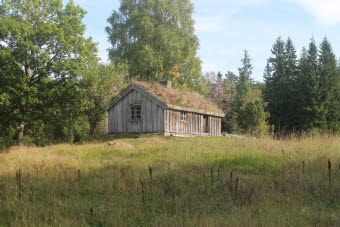
-
Ljungås Nature Reserve: The next stop is Ljungås, a forest farmer's homestead from the 1800s. Here, you can get a sense of life in the region during the 1800s and the hard work behind cultivating small fields. The reserve features two hiking trails with information boards telling the story of Oskar, who lived here and managed the land.
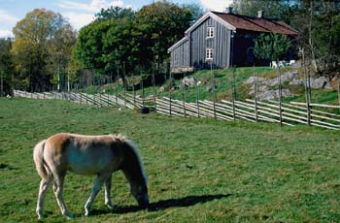
-
Nårunga: Continue to the picturesque village of Nårunga, with its church atop a hill. On the churchyard, you'll find the gravestones of Anders Alf and "Ljurskamjölnaren" Anders Peter Andersson. Anders Alf's fate is particularly poignant, reflecting life in the region during the famine years. He was a poor man whose meager land couldn't support his family after a year of crop failure. In desperation, he ventured onto another farm's land to find some grain but was discovered and was to be tried the next day. The evening before the trial, Anders and his wife decided it would be best if he took his own life to spare the family from shame and to garner sympathy and aid after his death. Anders drowned himself that night but, as a thief and suicide, was not allowed burial in the churchyard; his body was instead buried in Trollö bog.
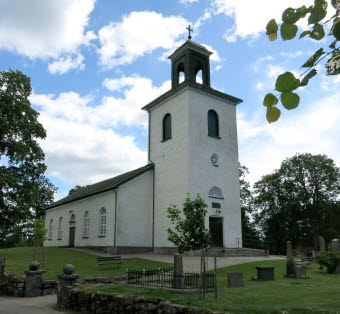
-
Ornunga and Asklanda: In Ornunga and Asklanda parishes, you'll first encounter the new church in Ornunga, offering a lovely view of Lake Ornunga. A kilometer further, you'll reach the old church and the local heritage center owned by the Svältornas Heritage Association. Here, you'll find preserved artifacts and stories from that era. Midsummer is celebrated here, and during the summer, Saturday gatherings feature interesting speakers and storytellers.
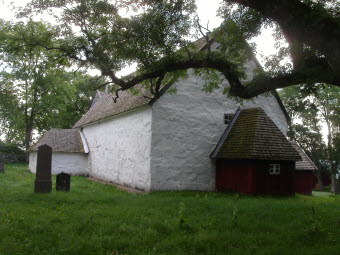
-
Emigrant Cottage: Located beautifully in a fine meadow in Asklanda, this cottage was built on-site for the filming of "Emigrants" in 2020. During intense days of filming, the cottage depicted Korpamoen, where Kristina and Karl-Oskar live before emigrating. The cottage remains, complete with Kristina's swing. Grazing animals roam the meadow, so be sure to close gates behind you.
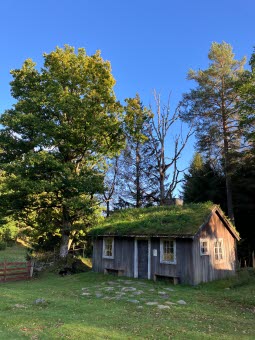
Practical Information
-
Distance: The entire route is approximately 60 kilometers long, srtaing from Vargarda city centre.
-
Accessibility: The route is suitable for both cycling and driving.
-
Additional attractions: Along or near the route, you'll find cozy swimming spots, restaurants, monuments, and of course, lots of beautiful nature.

